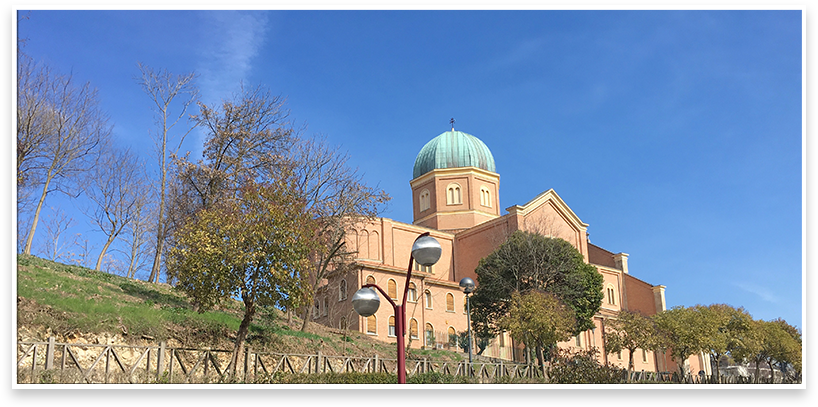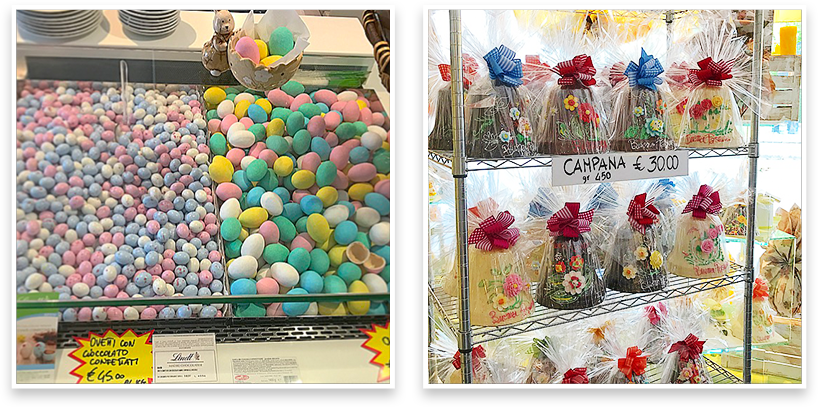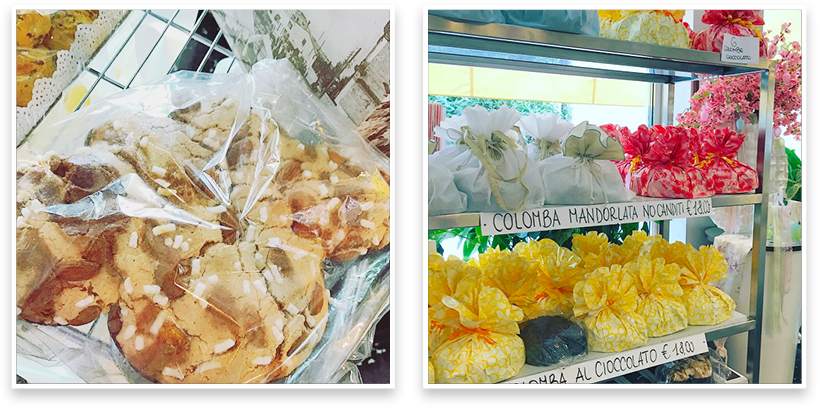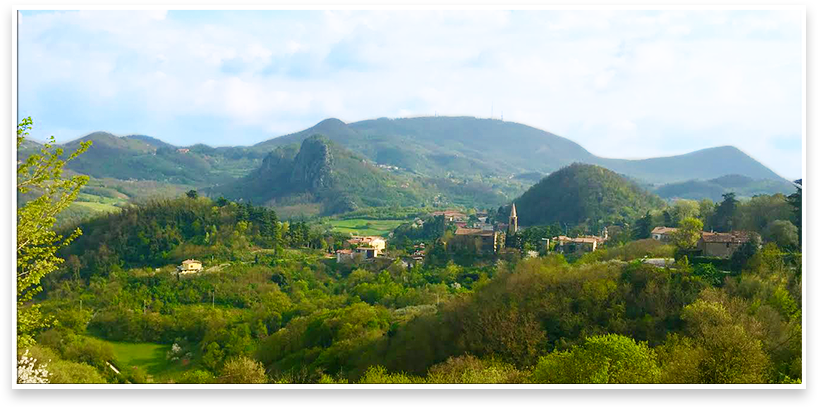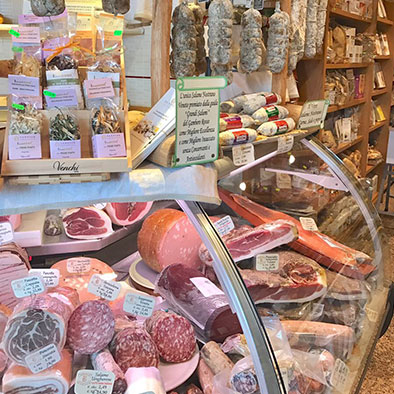 Easter celebrations throughout the Italian peninsula are many and quite diverse, as Pasqua is one of the most festive occasions of the year for Italians, second only to Christmas. Easter marks the end of a time of reflection during the period of Lent and then culminates with the joyous celebration of Christ’s resurrection. The celebrations in Italy extend over a course of several days as opposed to just Easter Sunday. From the southern tip to the north, towns and villages during the settimana santa, or Holy Week, hold traditional religious processions and rites, popular feasts and folkloristic festivities including food fairs and performances. With the sun shining bright longer into the evenings, Italians literally head to the narrow streets of centro storico into the main piazzas all week culminating on Easter Sunday to take part in parades and commemorations to honor this significant and joyous religious holiday.
Easter celebrations throughout the Italian peninsula are many and quite diverse, as Pasqua is one of the most festive occasions of the year for Italians, second only to Christmas. Easter marks the end of a time of reflection during the period of Lent and then culminates with the joyous celebration of Christ’s resurrection. The celebrations in Italy extend over a course of several days as opposed to just Easter Sunday. From the southern tip to the north, towns and villages during the settimana santa, or Holy Week, hold traditional religious processions and rites, popular feasts and folkloristic festivities including food fairs and performances. With the sun shining bright longer into the evenings, Italians literally head to the narrow streets of centro storico into the main piazzas all week culminating on Easter Sunday to take part in parades and commemorations to honor this significant and joyous religious holiday.
Religious traditions are deeply rooted in the Italian people, although notably stronger in the South where these rituals tend to be upheld with more fervor and devotion. Vibrant processions take place where the local men serve as porters, carrying enormous statues of the saints depending on the day of the Holy Week. Some villages even set up a stage in centro where local townspeople re-enact scenes from the Gospel. An example of one of these spectacular events is one of the oldest: La Processione dei Misteri (The Procession of the Mysteries) that symbolizes the events of the Passion and Crucifixion. Held on Good Friday in the Sicilian city of Trapani, it lasts almost 24 hours while numerous floats make their way through the city carrying the ‘Misteri’ (Mysteries) statues.
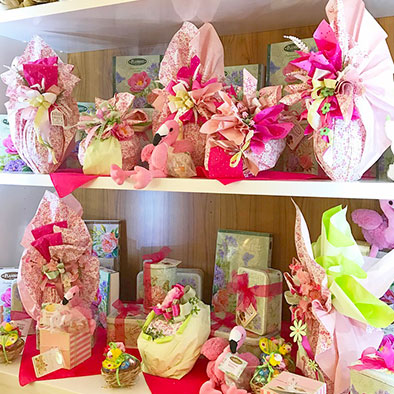 Another ancient folk ceremony not to be missed is the famous Scoppio del Carro (Explosion of the Cart) event held in Florence on Easter Sunday morning. An antique cart, packed full with fireworks, is paraded through town pulled by white oxen adorned with flowers & herbs and surrounded by townspeople dressed in period costumes. At the end of the procession it gets set up in front of the Cathedral of Santa Maria del Fiore where it is finally ignited by a fuse attached to a dove-shaped rocket holding an olive branch – a successful explosion is said to bring good harvest & luck. Of course solemn mass is held all across the Bel Paese. In Vatican City on Good Friday the Pope retraces Christ’s Via Crucis during a ceremonious candlelit procession that leads to mass in St. Peter’s Square where thousands of pilgrims gather to participate.
Another ancient folk ceremony not to be missed is the famous Scoppio del Carro (Explosion of the Cart) event held in Florence on Easter Sunday morning. An antique cart, packed full with fireworks, is paraded through town pulled by white oxen adorned with flowers & herbs and surrounded by townspeople dressed in period costumes. At the end of the procession it gets set up in front of the Cathedral of Santa Maria del Fiore where it is finally ignited by a fuse attached to a dove-shaped rocket holding an olive branch – a successful explosion is said to bring good harvest & luck. Of course solemn mass is held all across the Bel Paese. In Vatican City on Good Friday the Pope retraces Christ’s Via Crucis during a ceremonious candlelit procession that leads to mass in St. Peter’s Square where thousands of pilgrims gather to participate.
Most Italians abstain from eating meat and sweets during Lent, so at the end of the solemn Holy Week on Easter Sunday the faithful gather with close family to prepare an abundant feast. The celebration typically starts with a rich morning Breakfast full of Dry Cured meats, Coppa is usually the preferred meat to throw into a frittata to be enjoyed with your morning cappuccino.
As a symbol of birth and the Shepard, typically agnello (lamb) is served as the main course. In Southern regions lamb is often prepared as a roast with red wine, garlic & herbs while even further south at the tip of the peninsula, hearty lamb stews are served. In the North a simple rack of lamb is typical. Egg dishes, including egg stuffed specialty breads and frittatas, are also very common since eggs represent fertility, life and its renewal, symbols of Easter and the new beginnings that the arrival of Spring offers. Each regional cuisine will focus on traditional abundant platters that highlight nature’s local harvest including artichokes, white and green asparagus, fresh field greens, sweet peas and fava beans.
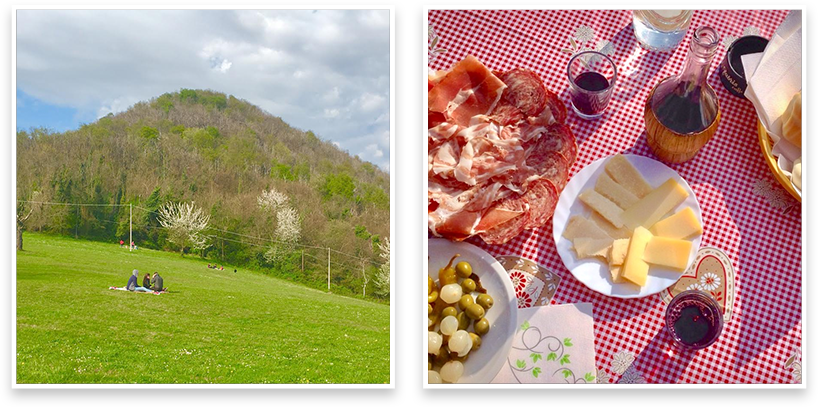 Chocolate bunnies are not the common Easter treat in Italy like in the US, but rather intricately decorated precious chocolate eggs are the traditional gift. Supermarket aisles are stacked high with industry produced eggs, mostly for young children, rigorously made with a special sorpesa (surprise) inside. Every well- respected pastry shop and bakery produces their own finely handmade chocolate eggs- you can even pre-order and have them place a special present inside for your loved ones. Romantic tradition has seen young Italian couples get engaged this way with the ring being place inside the ultra-special premium egg. The other famous Italian Easter dessert is the Colomba , a light and fragrant dove-shaped cake similar to the well-known Christmas version, the panettone. The Colomba is usually topped with almonds and sugar before being baked and is available with or without candied peel inside. Many manufacturers are also now offering unique fillings including limoncello or Nutella.
Chocolate bunnies are not the common Easter treat in Italy like in the US, but rather intricately decorated precious chocolate eggs are the traditional gift. Supermarket aisles are stacked high with industry produced eggs, mostly for young children, rigorously made with a special sorpesa (surprise) inside. Every well- respected pastry shop and bakery produces their own finely handmade chocolate eggs- you can even pre-order and have them place a special present inside for your loved ones. Romantic tradition has seen young Italian couples get engaged this way with the ring being place inside the ultra-special premium egg. The other famous Italian Easter dessert is the Colomba , a light and fragrant dove-shaped cake similar to the well-known Christmas version, the panettone. The Colomba is usually topped with almonds and sugar before being baked and is available with or without candied peel inside. Many manufacturers are also now offering unique fillings including limoncello or Nutella.
 A truly springtime occasion, Pasqua coincides with nature’s awakening marked by flourishing gardens and blossoming orchards, finalmente the end of winter. Easter Monday, known as Pasquetta (literally “Little Easter”) is also a national holiday in Italy. Since Easter Sunday is spent with family in church and then at home for the traditional meal, the usual custom on Pasquetta is to be with friends celebrating outdoors. The saying goes “Natale con i tuoi. Pasqua con chi vuoi.”, meaning “Christmas with family but Easter with whomever you want!”. Weather permitting, the Italians take mini road trips and head to the hills, countryside, woods and natural reserves for the famous Pasquetta picnic: some go all out & prepare a lavish barbecue style lunch while other groups keep it simple and make traditional picnic baskets filled with fresh breads, salami, cheese and of course vino. In recent years it has also become custom to take short trips to other European cities with a group of friends to celebrate the promise of new beginnings.
A truly springtime occasion, Pasqua coincides with nature’s awakening marked by flourishing gardens and blossoming orchards, finalmente the end of winter. Easter Monday, known as Pasquetta (literally “Little Easter”) is also a national holiday in Italy. Since Easter Sunday is spent with family in church and then at home for the traditional meal, the usual custom on Pasquetta is to be with friends celebrating outdoors. The saying goes “Natale con i tuoi. Pasqua con chi vuoi.”, meaning “Christmas with family but Easter with whomever you want!”. Weather permitting, the Italians take mini road trips and head to the hills, countryside, woods and natural reserves for the famous Pasquetta picnic: some go all out & prepare a lavish barbecue style lunch while other groups keep it simple and make traditional picnic baskets filled with fresh breads, salami, cheese and of course vino. In recent years it has also become custom to take short trips to other European cities with a group of friends to celebrate the promise of new beginnings.
Throughout Italy, the arrival of Easter means it’s time for Easter Pie. The classic dish has different names throughout the region. Pizza Rustica, Torta Pasqualina, Pizzachino and Pizza Piena to name a few. Each region has its own twist, but one thing that is constant is low calorie it is not. Pizza Rustica is a pie filled with Prosciutto, Salami, Ham, Sausage, Cheese, and lots of Eggs. Fratelli Beretta products will be flying off the shelves as Easter approaches, and these beautiful pies are being made by families all over the world celebrating this delicious tradition. This classic recipe pairs nicely with another Italian classic, Chianti.
